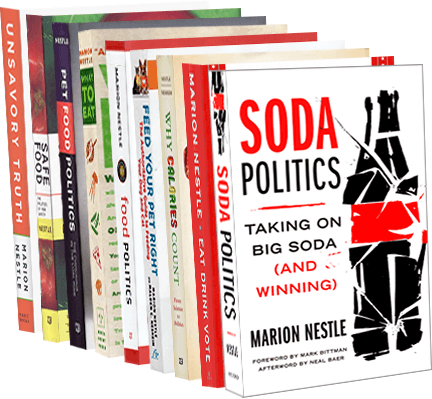Yes, they are, as witnessed by the article in the New York Times last Sunday and the editorial about food biotechnology in the September food issue of Scientific American.
Nicholas Kristof, also of the New York Times, summed up the arguments in favor of Golden Rice in a tweet: “Leftist hostility to Golden Rice is so frustrating! It wld reduce # of kids dying of Vit A deficiency.”
How I wish nutrition interventions were this easy.
If I sound weary of the defense of Golden Rice as the solution to the vitamin A-deficiency problem, it’s because I wrote about the science and politics of Golden Rice extensively a decade ago in my book, Safe Food: The Politics of Food Safety.
In 2010, I did a second edition. Here, in its entirety, is all I could find to say:
Golden Rice (Chapter 5) is the most prominent example of the benefits of agricultural biotechnology but ten years later its promise was still unfulfilled. Field trials began in 2008 and the rice might be in production by 2011 [Oops. It’s still not in production]. In the interim, researchers re-engineered the rice to contain higher levels of beta-carotene and showed that people who ate it could, as expected, convert beta-carotene to vitamin A. Supporters of Golden Rice continued to complain about the impossible demands of regulators and anti-biotechnology advocates. Advocates continued to argue that GM crops are unnecessary and threaten indigenous food security. The Gates Foundation remains the major funder of GM projects involving nutrient-enriched indigenous crops. Such technological approaches, advocates maintain, are doomed to fail unless they also address underlying social issues.
In the original text of Safe Food, I wrote:
Much of the promise of food biotechnology depends on its science, but the realities depend on social as well as scientific factors…The lack of vitamin A is the single most important cause of blindness among children in developing countries and a major contributor to deaths among malnourished children and adults….[but] Golden Rice is unlikely to have much commercial potential in developing countries. Its public relations value, however, is enormous.
I quoted Greenpeace, then the leading anti-biotechnology advocacy group:
Golden Rice obscures fundamental issues of societal values—in this case, poverty and control over resources—and is a techno-fix imposed by corporations and scientists without consulting recipients about whether they want it or not….the true purpose of Golden Rice is to convince people to accept genetically modified foods….
I went on to explain that a common theme of biotechnology proponents is that “Golden Rice holds so much promise that no questioning of its value is justified.” But:
The companies may be donating the technology to create the rice, but farmers will still have to sell it, and people will still have to pay for it. Moreover, in many countries where vitamin A deficiency is common, food sources of beta-carotene are plentiful, but people believe the foods inappropriate for young children, do not cook them enough to make them digestible, or do not consume enough fat to permit much in the way of absorption. It remains to be seen whether the beta-carotene in Golden Rice will fare better under such circumstances. Overall, vitamin A deficiency is a complicated health problem affected by cultural and societal factors as well as dietary factors. In this situation, the genetic engineering of a single nutrient or two into a food, while attractive in theory, raises many questions about its benefits in practice.
I then explain what happened when I sent a letter outlining some of these nutritional issues to a professional journal. The letter went viral. One of the responses said:
It would seem to me that the simplest way to find out if vitamin A rice [sic] works as a vitamin supplement is to try it out. If it doesn’t then what has been lost except a lot of hot air and propaganda; on the other hand if it does work and your letter has delayed its introduction, could you face the children who remain blind for life as a consequence?
The sic is because it’s beta-carotene, a precursor of vitamin A, but never mind. As I commented,
The writer seemed to be suggesting that even if beta-carotene contributes just a little to alleviating vitamin A deficiency, no questioning of the theoretical premise of Golden Rice—and, by implication, food biotechnology—is acceptable… What I find most striking about such views is their implication that complex societal problems—in this case, malnutrition—are more easily solved by private-sector, commercially driven science than by societal decisions and political actions.
As for what to do about vitamin A deficiency?
Taken together, the many nutritional, physiological, and cultural factors that affect vitamin A status suggest that the addition of a single nutrient to food will have limited effectiveness. Instead, a combination of supplementation, fortification, and dietary approaches is likely to be needed—approaches such as promoting the production and consumption of fruits and vegetables rich in beta-carotene, educating people about how to use such foods, and improving the quantity and variety of foods in the diet (so beta-carotene can be better absorbed). Perhaps most helpful would be basic public health measures such as providing adequate supplies of clean water (to prevent transmission of diarrheal and parasitic diseases).
Today, I would add sustainable agriculture to that list but even with that addition, none of these social solutions is likely to contribute to corporate profits.
My conclusion:
Can genetic engineering usefully contribute to such efforts? Possibly, but that question cannot yet be answered. In the meantime, the industry’s public relations campaign continues.


